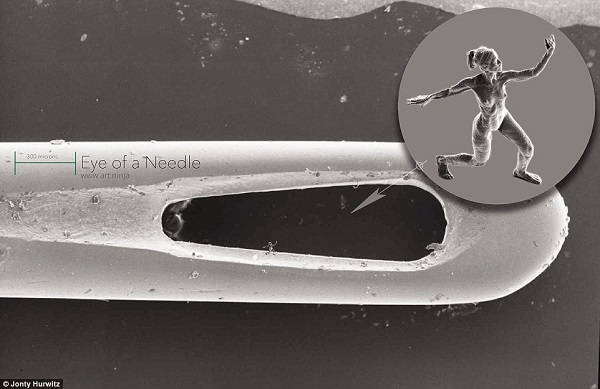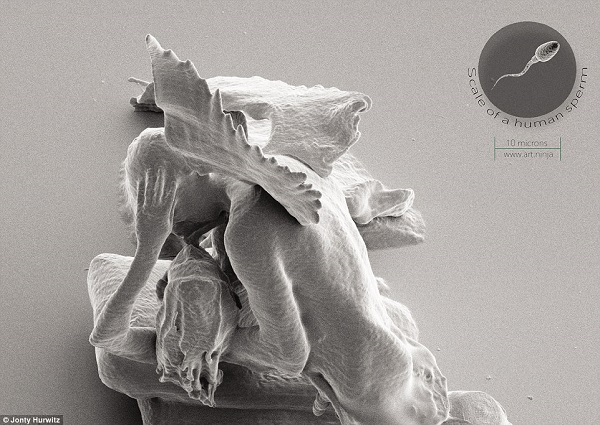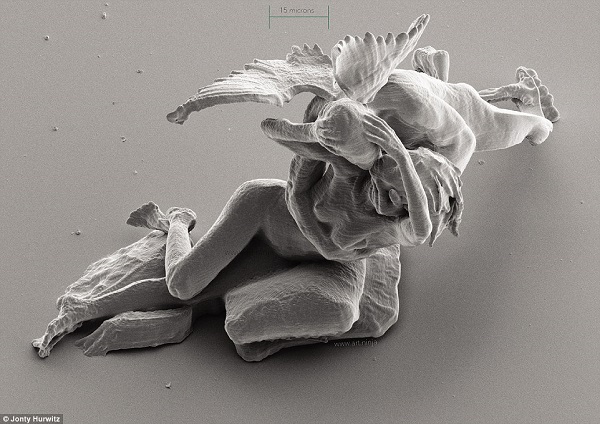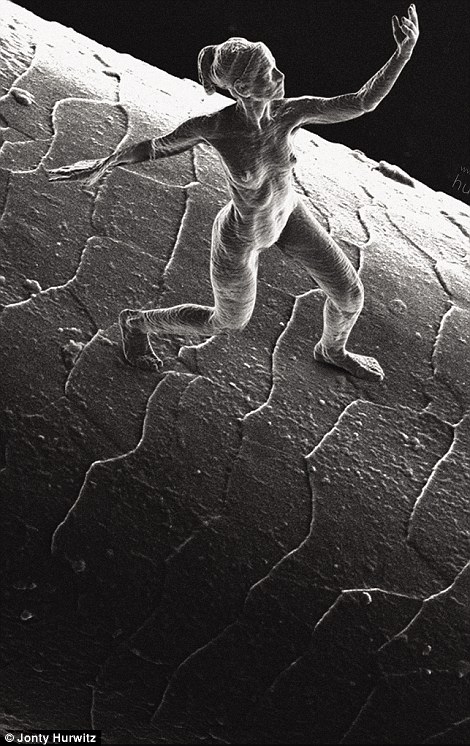
An artist created a series of sculptures that were so small they could be stood on the head of an ant, balanced on a human hair or placed in the eye of a needle.
Jonty Hurwitz made the extraordinary figures, called nano sculptures, using groundbreaking 3D printing technology. The largest of his series of seven sculptures was about the width of a strand of human hair – the smallest is less than half that width.
After 10 months of designing, sculpting and rendering, he was finally able to see his figures using an incredibly powerful microscope that is used to examine cancer cells. But after just a few fleeting moments, his creations were destroyed – smudged by a colleague’s finger.
A high-powered computer programme was used to take all of the data that was captured on camera and reassemble it into images – into something that Mr Hurwitz calls ‘digital clay’.
The sculptures were printed — with advice from the Weizmann Institute of technology, using a complex 3D printing technique, with another technique used to achieve the fine detail work.
Minuscule: The entwined figures, seen on the head of an ant, could only be seen using a microscope that is used to study cancer cells
All seven of them were so small that when they arrived – on a tiny piece of mirror, in a jewellery box, wrapped in layers of boxes and bubble wrap – he couldn’t see anything. Eventually saw what looked like seven minuscule dust particles that were caught in the light.

After a hunt to find a microscope that was strong enough to pick up the detail of the figures – only one used to study cancer cells was strong enough – and 45 minutes searching the mirror, Mr Hurwitz was finally able to see his sculptures.
He said: ‘everything just stops and everyone goes silent, and we stare at this, this feat of humanity, for minutes.’
But when his colleague tried to move the mirror to see his creations from a different angle, they were crushed – and the nano sculptures were lost forever.
Fleeting: The sculptures, which took 10 months to create, were destroyed when Hurwitz’s colleague accidentally crushed them with his finger





